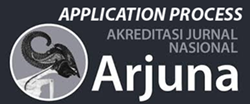Revisiting Trilateration Method Based on Time-of-Flight Measurements for Navigation
DOI:
https://doi.org/10.59653/jimat.v2i01.432Keywords:
Navigation, Time of Flight, Trilateration, PseudorangeAbstract
This paper revisits trilateration in three-dimensional positioning. Specifically, range between a positioning target and the reference points through time-of-flight (ToF) measurements. In a ToF, range is yielded by multiplying the time required by a wave to travel between two points and its propagation speed. Position of the target can be then estimated once the number of references are adequate, i.e. at least three for two-dimensional positioning and four for three-dimensional one. In this paper, the positioning is considered for navigation where the target moves following a trajectory whilst the ToFs take place in a certain period. The target position at the time is computed based on the ToFs through least square estimation. Through a numerical simulation, it is shown that the trilateration can track a target’s trajectory despite the decreasing performance at the end of the course.
Downloads
References
Alshareef, A., Giudice, J.S., Forman, J., Shedd, D.F., Wu, T., Reynier, K.A., & Panzer, M.B. (2020). “Application of trilateration and kalman filtering algorithms to track dynamic brain deformation using sonomicrometry”, Biomedical Signal Processing and Control, Vol. 56, 101691.
Andò, S.B., Crispino, R. & Marletta, V. (2021). “An Introduction to Indoor Localization Techniques. Case of Study: A Multi-Trilateration-Based Localization System with User–Environment Interaction Feature”, Applied Sciences, Vol. 11, Issue 16, 7392.
Bensky, A. (2016). Wireless Positioning: Technologies and Applications, 2nd Edition, Artech House.
Caffery, J.J. (2000). “A new approach to the geometry of TOA location”, in Vehicular Technology Conference Fall 2000, Vol. 4, 1943–1949.
Blaiech, H., Liouane, N., & Saafi, M.A. (2021). “Localization of emotion via eeg analysis using 3d trilateration”, in 2021 25th International Conference Information Visualisation (IV), 197–204.
Eustice, R.M., Singh, H., & Whitcomb, L.L. (2011). ”Synchronous‐clock, one‐way‐travel‐time acoustic navigation for underwater vehicles”, Journal of Field Robotics, Vol. 28, No. 1, 121–136.
Fang, B.T. (1986). ”Trilateration and extension to global positioning system navigation. Journal of Guidance, Control, and Dynamics”, Vol. 9, No. 6, pp. 715–717.
Luo, Q., Yang. K., Yan, X., Li, J., Wang, C., & Zhou, Z. (2022). “An improved trilateration positioning algorithm with anchor node combination and k-means clustering”, Sensors, Vol. 22, No. 16, 6085.
Marasigan, R.I., Austria, Y.D., Enriquez, J.B., Lacatan, L.L., & Dellosa, R.M. (2020). ”Unmanned aerial vehicle indoor navigation using wi-fi trilateration”. in 2020 11th IEEE Control and System Graduate Research Colloquium (ICSGRC), pp. 346–351.
Moleski, T.W. & Wilhelm, J.P (2022). ”Trilateration Positioning Using Hybrid Camera–LiDAR System with Spherical Landmark Surface Fitting,” Journal of Guidance, Control, and Dynamics, Vol. 45, No. 7, 1–16.
Pakanon, N., Chamchoy, M., & Supanakoon, P (2020).”Study on accuracy of trilateration method for indoor positioning with ble beacons”, in 2020 6th International Conference on Engineering, Applied Sciences and Technology, 1–4.
Plets, D., Almadani, Y., Bastiaens, S., Ijaz M., Martens, L., & Joseph, W. (2019). “Efficient 3D trilateration algorithm for visible light positioning”, Journal of Optics, Vol. 21, No. 5, 05LT01.
Simamora, Y.S.M., Tjokronegoro, H.A., & Leksono, E. (2019). “Compensation of asynchronous time of flight measurements in a long baseline navigation”, SN Applied Sciences, Vol. 1, No. 3, 1–8.
Simamora, Y.S.M., Tjokronegoro, H.A., Leksono, E., & Brodjonegoro, I.S. (2022). “Compensation of ins/lbl navigation errors in a polynomial sound-speed-profile”, Journal of Engineering and Technological Sciences, Vol. 54, No. 2, 383–404.
Strang, G. (2019). Introduction to Linear Algebra, Fifth Edition, Cambridge University Press.
Teoman, E. & Ovatman, T. (2019). “Trilateration in indoor positioning with an uncertain reference point”, in 2019 IEEE 16th International Conference on Networking, Sensing and Control (ICNSC), 397–402.
Terajanu, G. (2013). Discrete Kalman Filter Tutorial, SUNY at Buffalo.
Thomas, F. & Ros, L. (2005). “Revisiting trilateration for robot localization”, IEEE Transactions on Robotics, Vol. 21, No. 1, 93–101.
Webster, S.E., Eustice, R.M., Singh, H., & Whitcomb, L.L.(2012).” Advances in single-beacon one-way-travel-time acoustic navigation for underwater vehicles”, The International Journal of Robotics Research, Vol. 31, No. 8, 935–950.
Wetter, E. & Seto, M.L (2022). “Collaborative auv localization and tracking of an underway ship with adaptive pinging and a planner for trilateration,” in 2022 IEEE Canadian Conference on Electrical and Computer Engineering (CCECE), 294–299.
Yang. B., Guo, L., Guo, R., Zhao, M., & Zhao, T. (2020).”A novel trilateration algorithm for RSSI-based indoor localization”, IEEE Sensors Journal, Vol. 20, No. 14, 8164–8172.
Downloads
Published
How to Cite
Issue
Section
License
Copyright (c) 2023 Yohannes S.M. Simamora, Nahdia Fadilatur Rachmach, Muhammad Yaasir Rizqon, Kheri Agus Suseno, Muhammad Nursyams Hilmi

This work is licensed under a Creative Commons Attribution-ShareAlike 4.0 International License.
Authors who publish with this journal agree to the following terms:
- Authors retain copyright and grant the journal right of first publication with the work simultaneously licensed under a Creative Commons Attribution-ShareAlike that allows others to share the work with an acknowledgement of the work's authorship and initial publication in this journal.
- Authors are able to enter into separate, additional contractual arrangements for the non-exclusive distribution of the journal's published version of the work (e.g., post it to an institutional repository or publish it in a book), with an acknowledgement of its initial publication in this journal.
- Authors are permitted and encouraged to post their work online (e.g., in institutional repositories or on their website) prior to and during the submission process, as it can lead to productive exchanges, as well as earlier and greater citation of published work (See The Effect of Open Access).























